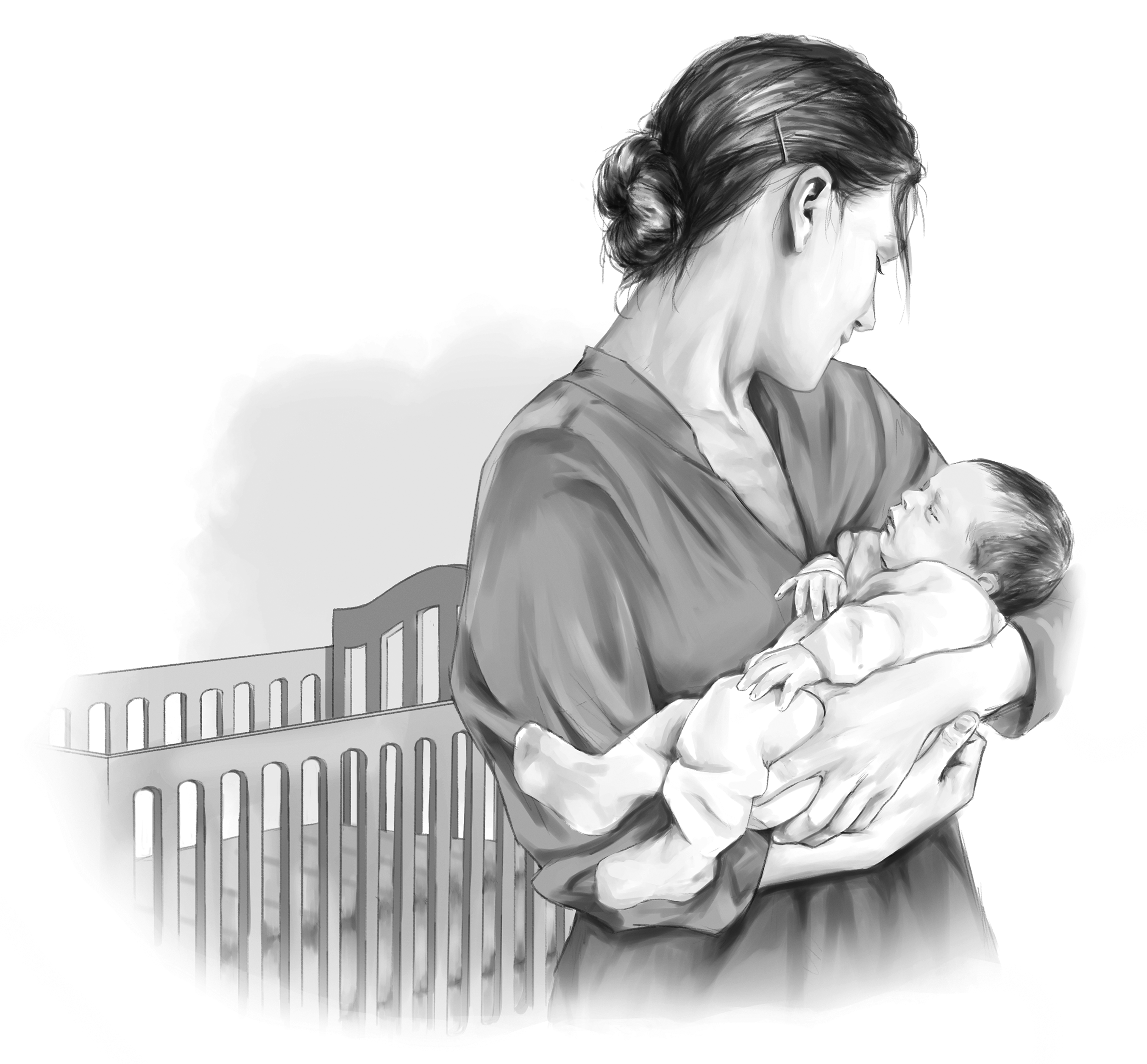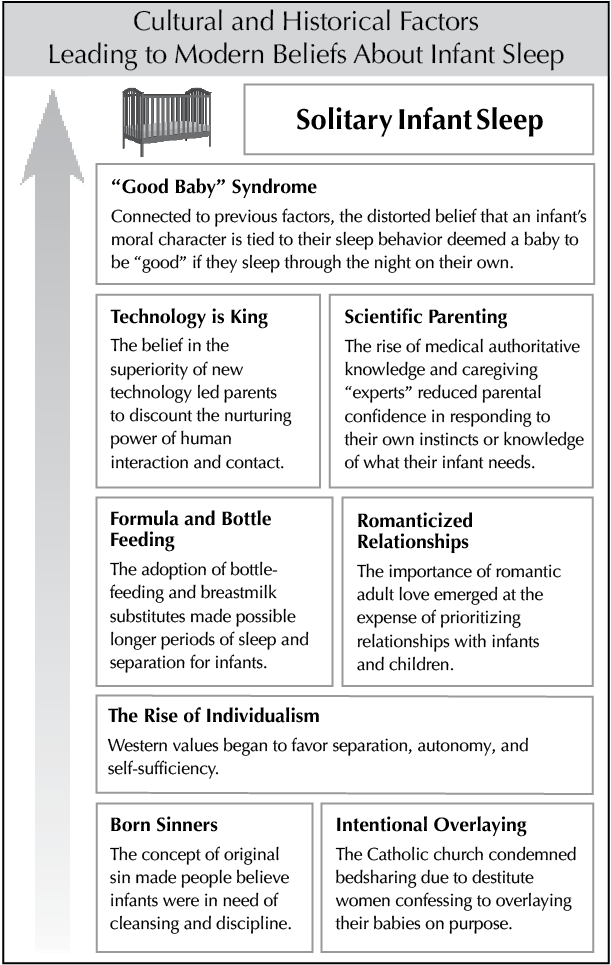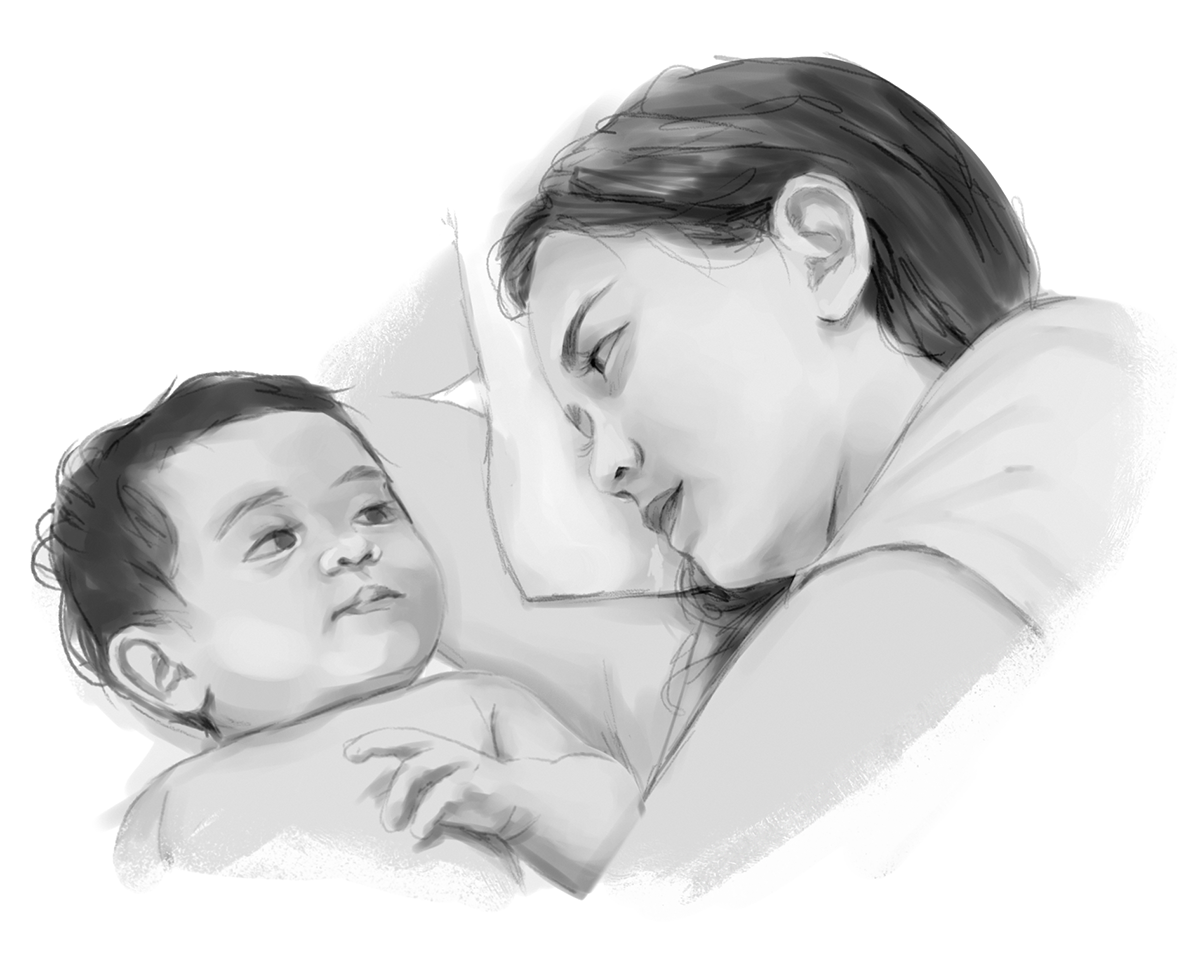Sleeping next to your child should instinctively be the most natural way for parents and babies to sleep. It is only in recent history that mothers, in the relatively small Western industrialized world, have had the dubious luxury to ask two basic questions: “How will my baby be fed?” and “Where will my baby sleep?”
No human ancestral or modern infant was ever separated from its caregiver, nocturnally or at any other time. What an odd notion for a mother to leave her helpless child all alone to sleep in an entirely separate space! Yet, today, people have been taught to be afraid of bedsharing. They have been warned that bedsharing will lead to parents unwittingly crushing their helpless infants, making moms and dads increasingly paranoid. How did we arrive at this unnatural conclusion?
There are a lot of reasons. Western fear of bedsharing can be traced all the way back to 500 years ago, in major European cities such as Paris, Brussels, Munich, and London. Historians have documented that Catholic priests in these cities condemned infants and parents sleeping in the same bed after poor women confessed to intentionally crushing their babies in bed in attempts to control family size (1, 2). While this is an interesting historical factor to consider, there are also many pertinent cultural factors that more directly relate to our current condition.
First, there was the development and production of artificial human milk, or baby formula, and society’s emphasis on the alleged benefits of bottle-feeding. Bottle-feeding enabled mothers to spend more time apart from their babies. With rising affluence in the middle class and an increased value placed on individualism, separate bedrooms for parents and children became more common and culturally fashionable. Family members, childcare experts, and pediatricians stressed the importance of solitary sleep for the child and intimacy for the parents.
By the mid-1900s, it became very common, for the first time in human history, for babies to be bottle-fed and then placed to sleep on their stomachs (to promote uninterrupted sleep) in a room far from the sensory range and supervision of their parents. It did not work out very well for babies. This development gave rise to the epidemic of Sudden Infant Death Syndrome (SIDS). Culture changed, but the human infant’s need for breastmilk and contact with the mother’s body did not.

I touched on the social values of autonomy and independence earlier, but our desire to raise independent children has led to a false belief that they must be independent from the very beginning of their lives. Parents worry when their infant dislikes sleeping alone or craves their attention. This ignores the fact that infants are, biologically, contact seekers who are—and should be—dependent on parents and caregivers. Yet, in attempts to raise self-reliant children, many parents have decided that it’s best for an infant to sleep alone, allowing their ideological beliefs to guide their parenting technique, rather than scientific research or even their instincts.
Parental instinct has also been undermined by Western medical authoritative knowledge. With the rise of science and technology, people began to trust “authorities” and “officials” more than their own instincts. However, current recommendations for infant sleep originated mainly from white men, many of whom never cared for their own infants, and based their conclusions not on empirical scientific research, but on their ideological beliefs. And parents heeded their advice.
Pediatricians and childcare experts erroneously claimed that separate sleep promoted an infant’s ability to “self-soothe,” and would lead to infants becoming independent children and more satisfied adults. Opponents of cosleeping falsely claim that “problems” are inevitable and that social skills and independence might only be obtained by children through the minimization of parental interventions and contact, supported by solitary sleep. Nothing could be further from the scientific truth.
What we have come to learn in recent decades is that if any developmental differences can be associated with sleeping arrangements, the opposite of common beliefs is true: it is cosleeping children, and not solitary-sleeping children, who appear to be more independent (3).

Unfortunately, the cultural legacy of independent sleep remains truly ingrained in Western societies, perpetuated by pediatric sleep “experts” whose training took place when most mothers were feeding their babies formula or breastmilk substitutes. But the world has shifted away from formula-feeding. With breastfeeding mothers now in the majority, infants sleeping in separate rooms has become impractical owing to the fact that breastfeeding requires short intervals between feeds.
This historical and cultural context makes it easier to understand why it was assumed that early nighttime infant separation from the parents was necessary to produce happy, confident, emotionally healthy, independent future adults, alongside magnificently energized parents. Without any anthropological or biological studies, which would have cast serious doubt on these assumptions, separate sleep spaces and controlled bottle-feeding were promoted.
And so we arrive at the classic image of a sleeping infant in Western industrialized societies: alone, detached, sucking on a bottle, without any parental contact.
References:
- Flandrin, J.L. (1979). Families in Former Times: Kinship, Household and Sexuality. Translated by R. Southern. (Themes in the Social Sciences.) NY: Cambridge University Press.
- Kellum, B.A. (1974). Infanticide in England in the later Middle Ages. History of Childhood Quarterly. Winter; 1(3), 367–88.
- Keller, M.A. & Goldberg, W.A. (2004). Co-sleeping: Help or hindrance for young children’s independence? Infant and Child Development, 13, 369–388. doi:10.1002/icd.365
This is an excerpt from Safe Infant Sleep: Expert Answers to Your Cosleeping Questions, which will be published by Platypus Media in January 2020. Visit www.SafeInfantSleepBook.com for more information.


